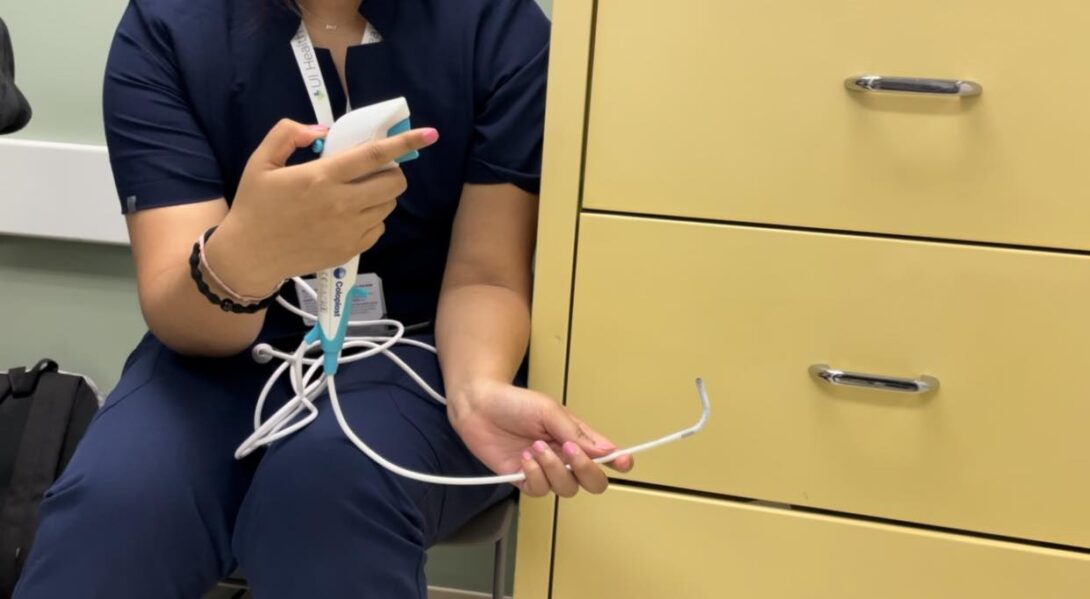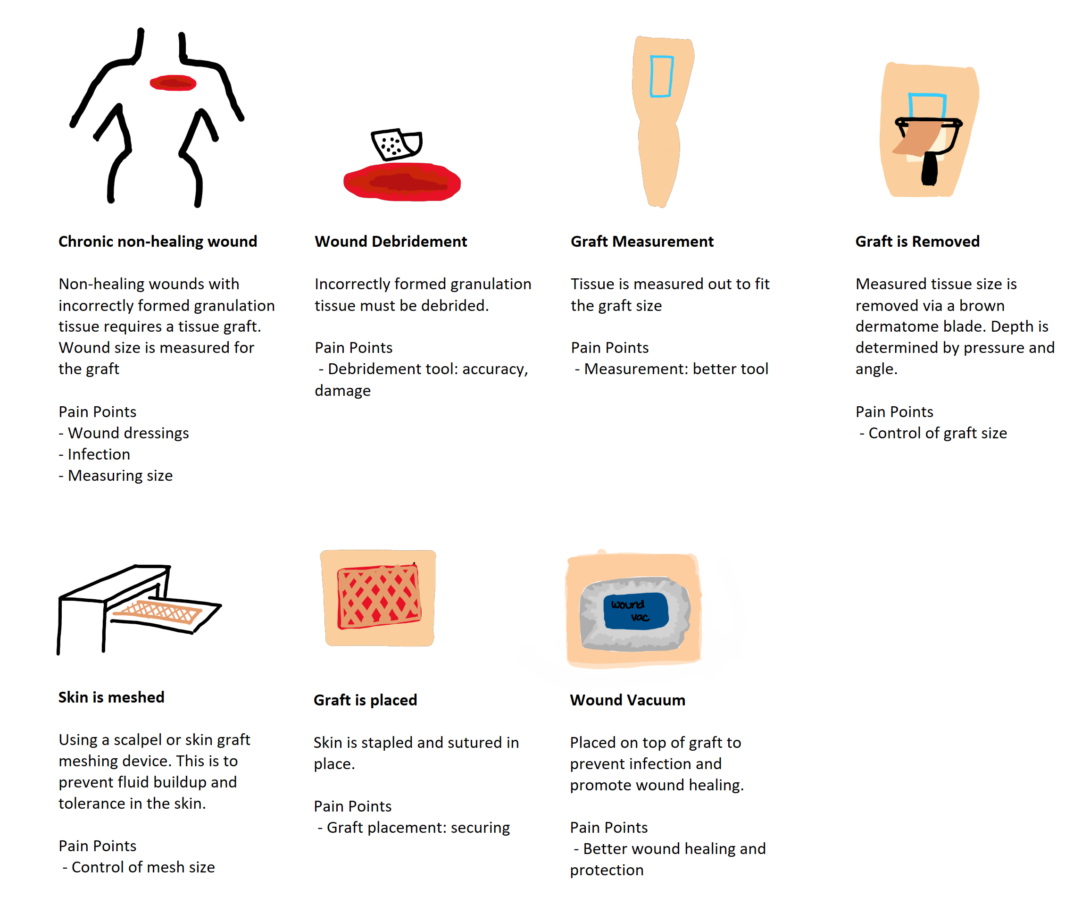
Yosman Dhar
2023 Students
Email:
Week 1 Heading link

A E I O U: Framework for conducting meaningful observations
Good Design: Cystoscope
Activity: Remove stent from bladder post renal transplant
Environment: Surgical outpatient clinic
Interaction: Enter urethra to remove stent
Object: Elongated neck with clamp and scope
Users: Urologists, General surgery residents
Extra:
Stents are placed after a renal transplant to stabilize the connection between the new kidney and the bladder. Removal of the stent, cystoscopy, is a simple 3-min long procedure that can be performed in the outpatient clinic. Patients experienced only mild discomfort.
Pros: Intuitive, simple
Cons: need to push on IV bag to create flow that opens ureter, no locking mechanism so must continue to press down on button to ensure clamp grasps the stent, OR turnover low so it is annoying for physicians to perform it in the OR so they prefer it in outpatient
Bad Design: Vomiting in the OR
Activity: Removal of endotracheal tube in anesthetized patient after surgery
Environment: OR
Interaction: Catching vomit of patient using mask
Object: Anesthesia mask
Users: Anesthesiology residents, CRNA
Extra:
When removing an endotracheal tube after an operation, some patients began to vomit. The vomit of sedated patients was aspirated, but those who were more awake and coughing had to be caught using an anesthesia mask. More components about this would need to be explored: how common it is, does it depend on the patient or the anesthesiologist’s training, etc.
Week 2 Heading link

Khan AA, Khan IM, Nguyen PP, Lo E, Chahadeh H, Cerniglia M, Noriega JA. Skin Graft Techniques. Clin Podiatr Med Surg. 2020 Oct;37(4):821-835. doi: 10.1016/j.cpm.2020.07.007. PMID: 32919607.
This review details the procedure of skin grafting to the lower extremity. It breaks down the steps and outlines current devices, the required skills skills, and potential complications associated with the procedure.
Week 3 Heading link
Need Statements
Neonatal patients undergoing surgery experience decreased body temperature and need to maintain a suitable temperature of 98F.
Neonatal patients undergoing surgery experience decreased temperatures due to fluid spilling across drapes need to maintain a higher body temperature.
Patients undergoing surgery who become wet during irrigation need a way to be dried.
Population: Young children, who are smaller and need to maintain a warm body temperature to prevent clotting
Opportunity: Patients become wet during irrigation
Outcome: To maintain a higher body temperature, dryness, improved blood clotting
Dr. Sims told us about issues regarding maintaining the baby’s temperature because of fluids rolling off the sides of the baby and then the baby is sitting in fluid, cooling them. For better understanding, we need to understand how the temperature is taken (core body, peripheral). What is the average temperature that is recorded and what is considered concerning.
Needs Statements
Nurses in the OR managing pediatric patients need to position the patient to gain clear surgical site access
Nurses in the OR managing pediatric patients need to secure wires to ensure vital readings.
Anesthesiologists in the OR managing pediatric patients need suitable intubation set up to reduce turnover time.
Population: Individuals that typically set up a patient in the OR before a surgery
Opportunity: Managing pediatric patients, who are smaller, more nervous
Outcome: Improved set up of the patient for surgery (intubation, positioning, wires)
I observed difficulties with pediatric patient set up, as the nurses used towels to position the head, stacked towels to stop the tubing from falling over and dragging the baby’s head, and diapers around the hands and feet to ensure appropriate wire placement. It would be interesting to see if these are issues in pediatric hospitals, or if the lack of pediatric patients is the reason for the lack of appropriate equipment.
Week 4 Heading link
Young pediatric patients undergoing surgery experience lower body temperatures due to fluid leakage through the surgical draping and need a way to maintain a pro-clotting body temperature during surgery.
Baby warmer with remote display and control (DE112014002827T5)
This device is a hospital bed designed to contain a radiating heater from the top of the bed. The claims are not well defined, but Claim 1 described a software that can control the heater, including an emergency system. The reason I like this patent in terms of the needs statement is because it takes into account a way to increase the temperature of the baby, which may be necessary during transport after the surgery as well. Similarly, I like the idea of a directed heat lamp that can avoid the surgeons.
Week 5 Heading link
Total Addressable Market
Pediatric patients need a way to prevent inadvertent removal of gastrostomy tubes to ensure adequate nutritional intake and reduce the number of replacements.
450,000 G-Tubes
$75 per tube ($30 to over $250)
TAM = 450,000 X $75 = $33.75 M ($13.5 M to $112.4 M)